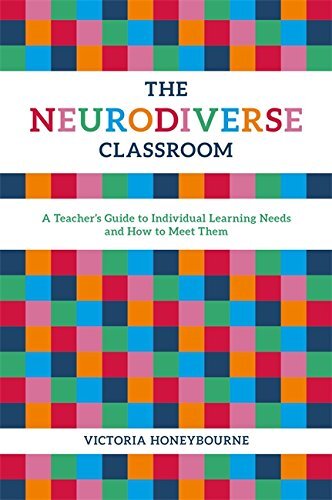NEURODIVERSITY AND UNIVERSAL DESIGN
PRIMARY AND SECONDARY SCHOOLS
inclusionED is an online professional learning community, co-designed with educators, for educators. It provides free evidence-based and research-informed teaching practices and tools to support diverse learners in inclusive classrooms.
In the average Australian classroom, at least three children have a learning difficulty or neurodevelopmental disability. The support and scaffolding these children receive during school can set the trajectory for the rest of their lives, but many teachers don't feel equipped to effectively support the learning of all students in their classrooms.
The teaching practices on inclusionED are underpinned by the principles of Universal Design for Learning. They don't provide a single one-size-fits-all solution but rather flexible approaches that can be customised for individualized learning. The platform also facilitates a national community of practice, enabling social sharing, comments and reviews of the experience implementing specific practices. During the co-design and development of inclusionED, educators reflected on the value of being part of an active, ongoing conversation to share good ideas that work in real classrooms.
PRIMARY SCHOOLS
A breakdown of sensory processing system, neurodiversity and universal design for learning in Primary Schools.
You’re a primary school teacher and have several students that are struggling to pay attention. This is a common, and often, puzzling situation for you as students have varying needs due to neurodivergence, culture, environment, etc.. For students that are on the spectrum or neurodivergent, being expected to learn and process information the same as neurotypical peers often results in frustration for you and the student(s).
1. SENSORY Processing & sensory processing disorder basics (101)
To understand our students (and ourselves) and how they are able to learn, it is crucial to understand our sensory systems.
2. Sensory Processing Disorder and Neurodiversity in Primary School: How it can affect learning
As we just discovered in Sensory Basics 101, the specific patterns of sensory processing and subsequent behavioural and emotional differences will vary among students who are neurodiverse. To keep it simple, you will often see 1 of 2 patterns of sensory modulation: a hyper-reactive tendency also called sensation seeking or 2) a hypo-reactive or sensory avoiding. Individuals with a hyper-reactive tendency a will typically respond to all types of sensory stimulation strongly and often exhibit “fight and flight” responses. Individuals with a hypo-reactive tendency often appear to be unaware of sensory events in their environments and can appear uninterested or distant.
Now that we have a simplified explanation of how our sensory systems work and where there can be disruption, let’s explore how this affects academics and learning.
3. Universal Design for Learning
You’re a primary school teacher that has several students with differing sensory needs, but how do you address those needs in a way that doesn’t single out the student or affect neurotypical peers? That’s where Universal Design for Learning comes in and has become a prominent topic in our schools.
4. Other resources TO REFERENCE
Sensory Strategies for the Classroom:
https://yourkidstable.com/sensory-kids-success-new-classroom/
How to incorporate movement breaks for the entire classroom:
A thorough explanation of heavy work through the lens of an occupational therapist:
A breakdown of fidget toys through the lens of an occupational therapist:
A breakdown of seating and cushion options for sensory seekers in the classroom:
A teacher’s guide to implementing UDL strategies, including a free downloadable chart for your reference:
5. Neurodiversity Strengths Checklist in Early and Primary School Age Student
We’ve laid the groundwork for sensory processing differences and the best way to incorporate strategies into the classroom; however, it’s also critical to always look at a student for their abilities and strengths while looking at their sensory processing struggles. Thomas Armstrong, Ph.D. is the Executive Director of the American Institute for Learning and Human Development, and an award-winning author and speaker who has been an educator for over forty-five years.He developed the Neurodiversity Strengths Checklist as an abilities-directed reference sheet. While it is not a standardized assessment, it is a reference for teachers, educators, parents, therapists, and administrators to look to the strengths of neurodiverse children instead of their deficits. Refer to Dr. Armstrong’s Strength Checklist:
NOTE: The above resources have been developed / curated by Dr Sarah Kennedy, OTD, OTR/L (Waterford, Ireland)
6. “THE NEURODIVERSE CLASSROOM”
By Victoria Honeybourne
With specific learning difficulties more prevalent than ever in mainstream schools, this is the essential guide for teachers wishing to create inclusive and successful learning environments in diverse classrooms. Focusing on promoting acceptance and self-esteem of each child rather than on labelling their difficulties, it shows how to make good use of simple resources and meet a wide range of needs, including children with ADHD, autism, OCD, dyslexia and special speech and language needs.

